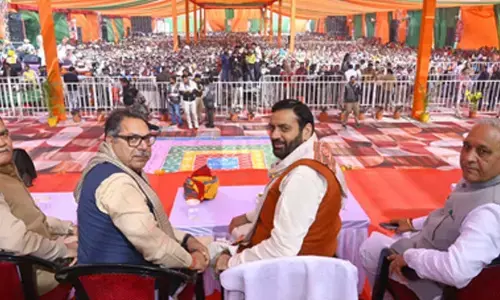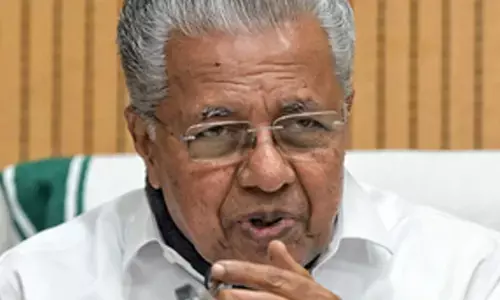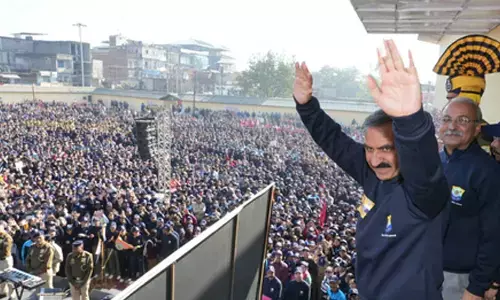Invest in technology to create jobs

America has become the global economic leader mainly on the strength of new technologies Many of the pathbreaking inventions in the last century has been made in America with government support
America has become the global economic leader mainly on the strength of new technologies. Many of the path-breaking inventions in the last century has been made in America with government support.
The atom bomb was made in the Forties in midst of the Second World War. It led to the creation of nuclear technologies that made a decisive impact on electricity generation. The second invention was that of the internet.
This was invented with support of the US Government. In turn, this led to the development of new products like routers where America has an edge even today. Companies like CISCO have conquered the global markets with these technologies.
I understand that CISCO has got the largest ever order from Reliance Jio to supply routers for its emerging telecom network. The prowess of the American economy has been built on the support provided by the US Government to these inventions.
There have been periods of difficulty as well. The American economy faced a crisis in 2008. The reason was that few such path-breaking inventions took place in the first decade of this century. The result was that the American multinational companies did not have unique products that they could sell to the rest of the world at high prices and earn incomes from exports or royalties.
The absence of new technologies put the American economy at a disadvantage. They paid high wages to their workers. The cost of manufacturing a car, for example, was high in America. American auto makers like Ford and General Motors made investments in India to produce their cars with cheap Indian labour. Then they imported these cars in America. This situation was doubly beneficial for us.
We got foreign investment from Ford and General Motors; and we got dollars from the export of cars to America. In the result capital fled from America to India; manufacturing shifted from America to India and exports rose from India to America.
The basic competitiveness of an economy depended on two factors—high technology and cheap labour. The absence of new inventions eroded the competitive advantage of America which was built on new technologies. However, the competitive advantage of India held because it was built on the strength of cheap labour. As a result, we got good amounts of foreign investment and also we were exporting our goods.
Thus we remained largely unaffected by the American crisis of 2008. On the other hand, America lost investments and was flooded with cheap imports. This aggravated the crisis. The situation has changed dramatically in the last few years. Robots have been invented that can undertake most repetitive works in manufacturing such as assembling cars.
That has made it possible to manufacture the same goods with maybe one-tenth of the number of workers required previously. This has eroded the competitive advantage in manufacturing enjoyed by India till now. It has become profitable for American corporations to manufacture cars in America with robots because the number of workers required is few.
This has led to the return of manufacturing to America. American MNCs are no longer finding it profitable to establish automobile factories in India for export of cars to America because the low wage in India is no longer relevant.
The invention of Artificial Intelligence has done the same in the services sector. It is now possible to undertake legal research with sophisticated software. I am told that large number of jobs were being created for our engineers in customising complicated software.
Now this work is being done by AI. Works like medical transcriptions and translations can possibly be done by computers. It is no longer necessary for American corporations to employ large numbers of engineers from India to provide these services.
These technological developments will have a deep impact on India. The cost of production of goods in India and the cost of production of services by Indian engineers is no longer very less. In the result we are not likely to receive large amounts of foreign investment or increase our exports. The problem does not stop here.
If investing in India is not profitable for American corporations, then it is also not profitable for Indian corporations. There are indications that Indian businessmen are no longer interested in investing in India. They are more interested in investing abroad. The Prime Minister has himself expressed anguish that Indian businessmen are not investing in India.
Exports are also down. Our trade balance is getting worse. We have not only lost the competitive advantage, America has moved towards protectionism. Thus, our exports are doubly suffering. This tendency is only likely to get deeper in absence of development of new technologies in India.
We need a totally different strategy in this situation. The old formula of building our economy on the strength of cheap wages coupled with foreign investment will not work. The way forward is for us to make heavy investments in the inventions of new technologies just as America invested in the atom bomb and the internet. We have to invent new technologies and build our economy on the strength of these new products.
Some of the new emerging areas where we can invest and invent are space travel, next generation of internet, genetics, big data processing and the like. We will be able to challenge the global economic supremacy of the United States with these inventions and become a global economic leader.
In fact, we need much less money to make the same inventions because the salaries of the scientists are much less in India. The difficulty is that we do not have the big money to invest in such research. The solution is to cut down in other areas. For example, the Government has made available Rs 80,000 crores to enable the loss-making Public Sector Banks to survive.
Instead, of putting money into these banks, the Government could sell them and earn 100 times the amount of Rs 80 lakh crores and use this money to invest in research. There is no future for the Indian economy unless we make such investments. The old strategy of building on cheap labour will not work. This is the challenge facing Prime Minister Modi. Author was formerly Professor of Economics at IIM Bengaluru
















